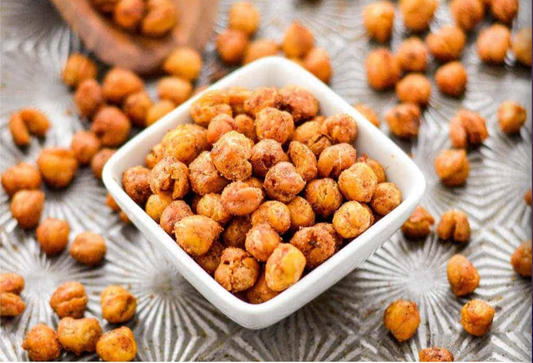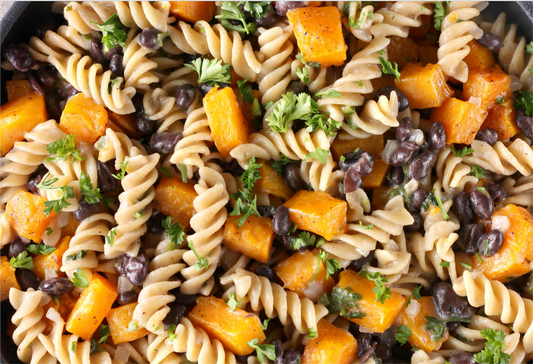Most people know that sugar does not have much benefit to our health and we have to consume sugar as little as possible.
But is this true? Sugar is everywhere, how do we avoid it?
If you want to understand why exactly sugars are harmful, what kinds of sugar create cravings vs. ones that don’t, and how to identify added sugars in tricky nutrition labels, keep reading!
In order to understand this topic well, first we need to look at sugar and carbohydrates closely.
When think “sugar”, we think of white crystal powder which is used to sweeten tea, coffee and baked goods. Those crystals are the final product of evaporation of the sugar cane after the shattering , squeezing and separation processes are completed.
But sugar is found in every carbohydrate containing food. As a result of the digestion, carbohydrates are broken down into glucose, fructose and galactose ( simple sugars). Fruits, vegetables, cereals, legumes, milk and dairy products are examples of carbohydrate sources.
These sugars aren’t harmful.
Added sugars are the type we want to keep at a minimum levels and a high amount of consumption is associated with chronic diseases. Added sugars do not naturally exist in the foods and are added during processing and packaging of food products. In other words, the sugar content of fruit, milk and dairy products should not be feared, but some juices, flavored yogurt or milk may contain added sugar.
Based on the World Health Organization, the average individual's daily energy needs are 2000 calories and maximum 5% of the daily energy comes from sugar. That means 100 calories per day from sugars or 25 grams (5 teaspoon) of sugar per day.
We can summarize: if an individual daily energy intake is 2000 calories then it’s upper limit of daily sugar consumption is equal to 25 grams = 5 teaspoon of sugar.
No B.S. guide to Identifying Added Sugars in Foods
In packaged foods, sugar can come up with many different names; sugar, glucose syrup, high fructose corn syrup, dextrose, fructose, maltodextrin… if you’re scratching your head, this is the guide for you:
Glucose syrup:
This is a mixture of glucose-fructose, which is formed by the breakdown of sucrose with performing heat and acid.
High Fructose Corn Syrup:
This is obtained from corn extract and contains 55% glucose and 45% fructose. It is frequently used in many of the packaged products.
Honey:
Although it is typically considered natural and healthy in micro-nutrients, honey counts as added sugar.
Date Syrup:
This is obtained from dates and high in glucose.
Maple Syrup:
This is obtained from the extract found in the body of the maple.
Coconut Sugar:
Made from coconut juice.*
Agave Syrup:
An extract obtained from agave plants.
* The fiber content of coconut sugar and their different fructose structure in agave syrup lowers their glycemic index. Although their glycemic index is low, it does not change the amount of sugar they contain. They are no different from the table sugar.
How Blood Sugar Affects Cravings? Glycemic Index and Glycemic Load
Every type of food you consume has different carbohydrates which raises your blood sugar differently. The glycemic index (GI) is the response of blood sugar after consumption of food containing carbohydrates. This is calculated based on the reference-50 grams of carbohydrates.
Low-GI foods increase the blood sugar in a slow, controlled way. Foods high in GI increase blood sugar and insulin rapidly, causing hunger and cravings soon after eating. Insulin is a hormone that controls blood sugar. If you eat too much added sugar and high GI foods, this is what it does to your body:
Excessive sugar biological cycle
High Glycemic Index > Hyperglycemia > Insulin Resistance > Metabolic Syndrome
& Food Intake & Hyperinsulinemia
This metabolic syndrome can manifest as abdominal obesity, elevated blood pressure (hypertension), elevated plasma glucose level (hyperglycemia), high serum triglyceride level, low HDL level (low good cholesterol). If it continues progressing, this leads to medical problems and causes chronic conditions such as cardiovascular diseases and type 2 diabetes.
To learn more take a look at our Glycemic Index and Glycemic Load blog Post by clicking here!
Why is Sugar Is Harmful To Our Health?
Experts agree that reducing the added sugar consumption is beneficial for our long-term health.
In many studies, the relationship between sugar consumption and cardiovascular diseases, obesity, diabetes and cancer has been determined.
- Empty calories: Added sugar contains NO essential nutrients
- Sweet tooth decay: Sugar has negative effects on dental health and causes dental caries.
- Fatty liver: Over consumption of sugars may result in fatty liver, non-alcoholic liver disease and obesity.
- Diseased dessert: Binging on sweets too often can also lead to diabetes, insulin resistance and heart problems.
- The Big C: Unfortunately, indulging too much in sweets also leads to the development of cancer
- Sugar Addiction: Sugar consumption stimulates the brain's reward center, making it addictive.(If you are addicted, you can turn it around! Here is Avisha’s sugar addiction to sugar free journey)
Excessive sugar consumption affects your sense of taste. If you have an appetite you can't control, it's probably because you're consuming too much added sugar.
Uh Oh! How Can I Reduce Sugar Intake?
- As a first step, reduce packaged foods and carbonated drinks.
- Don't be fooled by the "sugar-free" labels and be sure to read its contents. Be careful with the food claims such as "sugar free" or "natural". There are many packaged products such as yogurts, milk, protein bars, and salad dressings that look innocent to you however contain high amounts of added sugar.
- Naturally occuring sugars should not be afraid of. Fruit, milk and dairy products naturally contain sugar, and these are not classified as added sugar according to the World Health Organization's classification.
Once you control your sugar consumption, it becomes a pleasure rather than an addiction. Then there is not much to worry about. However, if you are addicted to sugar like (read Avisha’s sugar addiction journey) and you can’t control your intake, I would recommend to read the above suggestions once more and take a healthy step for your life in the long term.
-Coach Zeynep
References
Differential effects of fructose versus glucose on brain and appetite responses to food cues and decisions for food rewards
https://www.ncbi.nlm.nih.gov/pmc/articles/PMC4443321/
Sugar-sweetened beverages and weight gain in children and adults: a systemic review and meta-analysis
https://pubmed.ncbi.nlm.nih.gov/23966427/
Baby composition assessment for the definition of cardiometabolic risk
https://pubmed.ncbi.nlm.nih.gov/23612318/
Estimating Deaths from Cardiovascular Disease: A Review of Global Methodologies or Morality Measurement
https://www.ncbi.nlm.nih.gov/pmc/articles/PMC3712514/
Is the metabolic syndrome caused by a high fructose, and relatively low fat, low cholesterol diet?
https://pubmed.ncbi.nlm.nih.gov/22291727/
National, regional, and global trends in fasting plasma glucose and diabetes prevalence since 1980: systematic anlysis of health examination surveys and epidemiological studies from 370 country - years and 2.7 million participants
https://pubmed.ncbi.nlm.nih.gov/21705069/
Risk Factors Contributing to Type 2 Diabetes and Recent Advances in the Treatment Prevention
https://www.ncbi.nlm.nih.gov/pmc/articles/PMC4166864/
The Links Between Insulin Resistance, Diabetes and Cancer
https://www.ncbi.nlm.nih.gov/pmc/articles/PMC3595327/
Sugars in diet and risk of cancer in the NIH-AARP Diet and Health Study
https://www.ncbi.nlm.nih.gov/pmc/articles/PMC3494407/
Sucrose, high-sugar foods, and risk of endometrial cancer --a population-based cohort study




